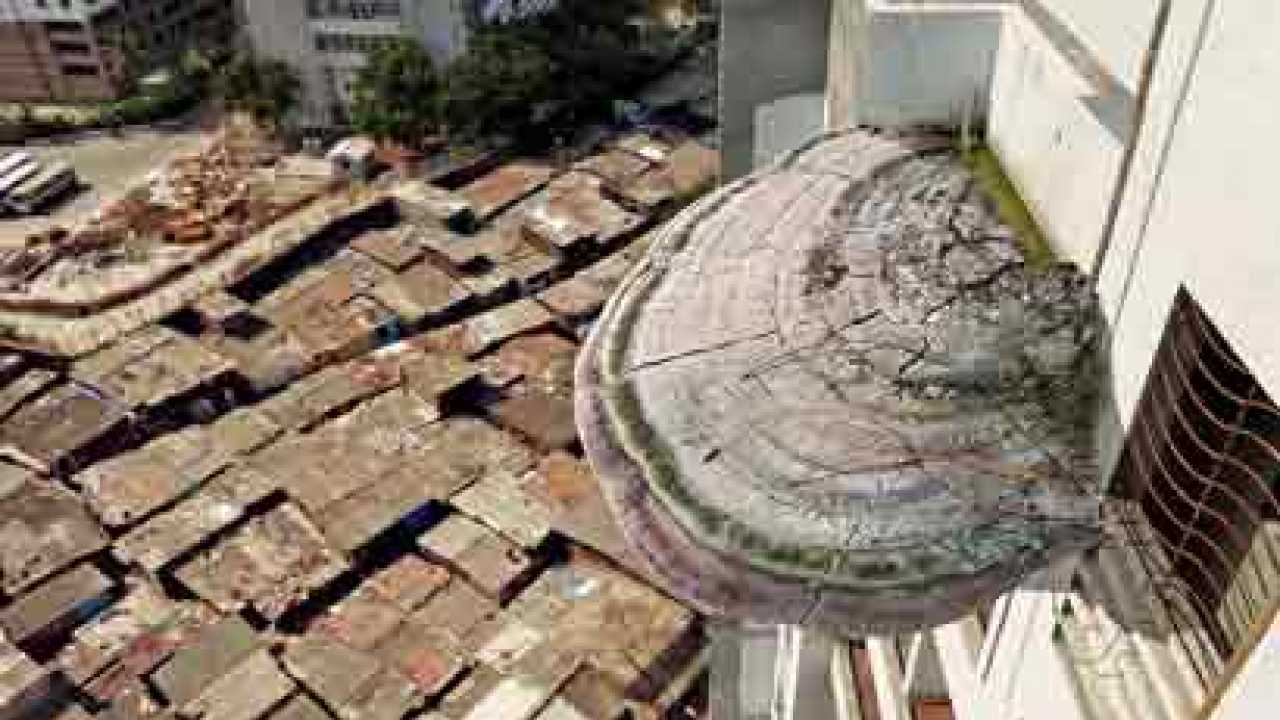
A short film by Tobias Revell, a British designer, imagines a Dharavi of the future — overrun by refugees post a civil war, and running on adapted European biotechnology which is working as a sustainable source of electricity, writes Apoorva Dutt.
A decade ago, terrorist attacks and a fractured government led to the Indian Civil War, ostensibly fought between the Hindu and Muslim communities. Decentralised powers gave the cities great clout, and Mumbai, in order to protect its booming business sector, conscripted a vast defence brigade while proclaiming neutrality…Mumbai slums became a haven for highly-educated but poverty-stricken refugees from mainland India…most moved to Dharavi.”
Tobias Revell’s version of Mumbai’s future might seem bleak. In his ten minute-long film, New Mumbai, Revell imagines a Dharavi overrun by refugees escaping a fractured country. In this imagined Dharavi, huge mushrooms balloon out of buildings and provide electricity to the slum. These magical mushrooms are, fittingly, highly experimental biotechnology from Amsterdam. “This film began as a research project into biotechnology, based on work done by a Slovakian group of biologists on accelerated protein growth in cell reproduction. From there I daisy-chained ideas together, creating a series of ‘what-ifs’ until I arrived at this narrative of giant mushrooms in the slums which just seemed neat,” says Revell.
The mushrooms seem like natural extensions of the city landscape in the film. At first, there were failed attempts at adapting the material for sale as a narcotic, possibly for the funding of terrorist activities. Attempts to sell them to the wealthier population failed because the consumers had “neither the incentive nor the expertise to use the material”. However, the highly-educated refugees were able to pool their knowledge and experience together to put the material to better use: electricity. Innovation fuelled by desperation in the face of over-population and lack of basic amenities make this an easily imaginable scenario.
Revell describes himself as a scenario designer, someone who “works with research, theories and ‘what ifs’ more than actual products”. “I tend to design for things that don’t exist yet. But what if they did? I speculate as to what that would be like, so that people are encouraged to think about these things,” he explains. Revell first showed the film a year ago as a performance; he took on the role of the ‘scientist’ in the film and gave a presentation using images and diagrams. “I needed a way to transmit the idea further, and make it engaging for an online audience, and that’s how the film came about,” says Revell.
The film has alternately been misunderstood as reality on some websites (“This is really cool technology the Indians are using!” enthuses one commenter), and derided as being simplistic and unaware of the complexity and diversity of the problems faced by slum dwellers. “Some of the feedback from native Mumbai-ans — is that right? — has been quite defensive,” concedes Revell, who didn’t get the chance to visit Dharavi. “There’s a sense that we’re glorifying the slums, and there are several examples of business leaders and so on citing Dharavi as a source of inspiration for innovation. I think that it’s hard to avoid. Of course I have no experience there, I’ve never been and can only go on the research I can assemble here so I can see why it might be read as patronising.”
Why choose Dharavi in the first place? “I researched slums in Rio, Cairo and Mumbai,” says Revell. “Mumbai leapt out as the perfect place. In Rio, the slums are overrun and dominated by gang warfare, drugs and weapons. In Cairo, the residents are subservient to local government with almost no sense of independence or a desire for change even after the recent revolution. In Mumbai there’s an independence. They seem to make Dharavi their own, and it’s full of exciting tales of microeconomics and specialists which make it unique. Hong Kong is similar but not on such a great scale, and not without the history that it had with Kowloon (an absolute dream of independent micro-economics). Mumbai was perfect because of its mix of location, status as an international city and a culture of innovation — what I’ve learnt is called jugaad.”